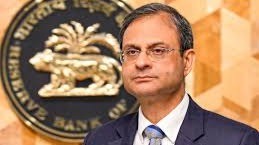Sanjay Malhotra,Governor,Reserve Bank of India
Explaining Friday’s cut, RBI Governor Sanjay Malhotra said inflation had softened significantly, giving space for continuing policy easing and front loading of rate cuts. The central bank has a 4% inflation target
MUMBAI: The Reserve Bank of India (RBI) cut its key repo rate by a larger-than-expected 50 basis points on Friday, a third consecutive reduction, and slashed the reserve ratio for banks as muted inflation provided space for policymakers to focus on supporting economic growth.
The Monetary Policy Committee (MPC), which consists of three RBI officials and three external members, cut the repo rate to 5.50%. It has now cut rates by 100 basis points in 2025, starting with a quarter-point reduction in February, its first cut since May 2020. It made a similar-sized cut in April.
The RBI also cut the cash reserve ratio by 100 basis points to 3%, adding to already surplus liquidity. It will unlock Rs 2.5 lakh crore of funds in the banking system by Dec.
India’s benchmark 10-year bond yield was down 2 basis points at 6.18%, after dropping 10 basis points earlier, while the rupee was little changed at 85.82, after dropping as much as 0.2%. The benchmark equity indexes also turned lower after advancing in the wake of the decision and were down around 0.1% each.
The monetary policy stance was changed from accommodative to neutral.
The repo rate — the rate at which banks borrow funds from the RBI — had last stood at 5.40 per cent on August 5, 2022.
Explaining Friday’s cut, RBI Governor Sanjay Malhotra said inflation had softened significantly, giving space for continuing policy easing and front loading of rate cuts. The central bank has a 4% inflation target.
After a detailed assessment of the evolving macroeconomic and financial development, as well as the economic outlook, the Monetary Policy Committee (MPC) decided to reduce the repo rate by 50 basis points, Malhotra said.
Weakening inflation gives space for continuing policy easing and front loading of rate cuts, Malhotra added.
Retail inflation has slowed more quickly than expected in recent months and dropped to a near 6-year low of 3.16% in April, sharply below the RBI’s medium-term target of 4%.
The central bank now expects inflation to average 3.7% in the current financial year, lower than its previous projection of 4%.
India’s economy has been resilient, with GDP growth surging to 7.4% in the January-March quarter.
India is already growing at a fast pace but aspires to grow at a higher pace, Malhotra said.
For the current financial year, GDP growth is projected at 6.5% by the central bank, unchanged from its previous forecast.
Ashwani Dhanawat, executive director & chief investment oOfficer, Shriram General Insurance, said,“The increased liquidity and push for economic growth could also stimulate demand for insurance products as businesses expand and consumers have more disposable income.”
Badrish Kulhalli – Deputy CIO & Head, Fixed Income, HDFC Life, said the sharper than forecast softening of inflation, opened up room for RBI to deliver greater easing. Inflation forecast for the year was lowered to 3.7% from the 4.0% estimated at the previous policy meeting.”
There has been no change in the growth forecast, at 6.5 per cent, for the year. However, global events have increased the uncertainty associated with economic activity, and the larger than expected easing is intended to provide support and buffer against any potential headwinds to growth, he added.
“We see the moves as prudent measures from RBI, as the markets were anyway expecting 50 bps cuts, through over two policy meetings, but the front loading will hasten the transmission of the rate cuts to banks’ lending rates,” explained Kulhalli.
Poonam Tandon, chief investment Officer IndiaFirst Life said the MPC has front loaded the rate cuts and liquidity measures as well. This means that there will be a long pause and, therefore, no further rate cuts unless growth surprises on the downside.
“The RBI’s decision to reduce the repo rate by 50 basis points to 5.5% underscores a clear commitment to supporting growth,” said Yashish Dahiya, Chairman & Group CEO of PB Fintech.
“Coupled with the shift to a neutral stance, it signals a more balanced and measured approach going forward. This move will ease borrowing costs and enhance liquidity, benefiting MSMEs and retail loan borrowers. Overall, we believe this step will positively influence India’s economic momentum amid global headwinds,” Dahiya felt.
Meanwhile, recovering all the early lost ground, the 30-share BSE Sensex jumped 591.94 points to 82,033.98 in morning trade. The 50-share NSE Nifty climbed 205.2 points to 24,956.10.
Interest-rate-sensitive realty index jumped 2.80 per cent, while auto index surged 1.14 per cent and bankex climbed 0.98 per cent.

